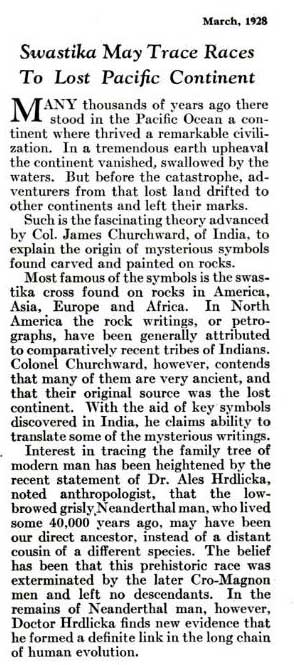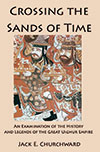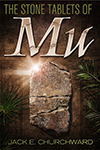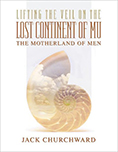Popular Science magazine (March 1928) had an article entitled “Swastika May Trace Races to Lost Pacific Continent” that quoted James’ theory on the lost Pacific Ocean continent that he called, “Mu”.

The text reads as follows:
Popular Science March 1928
“Swastika May Trace Races to Lost Pacific Continent”
Many thousands of years ago there stood in the Pacific Ocean a continent where thrived a remarkable civilization. In a tremendous earth upheaval the continent vanished, swallowed by the waters. But before the catastrophe, adventurers from that lost land drifted to other continents and left their marks.
Such is the fascinating theory advanced by Col. James Churchward, of India, to explain the origin of mysterious symbols found carved and painted on rocks.
Most famous of the symbols is the swastika cross found on rocks in America, Asia, Europe, and Africa. In North America the rock writings, or petroglyphs, have been generally attributed to comparatively recent tribes of Indians. Colonel Churchward, however, contends that many of them are very ancient, and that their original source was the lost continent. With the aid of key symbols discovered in India, he claims ability to translate some of the mysterious writings.
Interest in tracing the family tree of modern man has been heightened by the recent statement of Dr. Ales Hrdlicka, noted anthropologist, that the low-browed grisly Neanderthal man, who lived 40,000 years ago, may have been our direct ancestor, instead of a distant cousin of a different species. The belief has been that this prehistoric race was exterminated by the later Cro-Magnon men and left no descendants, however Dr. Hrdlicka finds new evidence that he formed a definite link in the long chain of human evolution.
The article is in the Google archives at http://books.google.com/books?id=ZScDAAAAMBAJ








 RSS - Posts
RSS - Posts